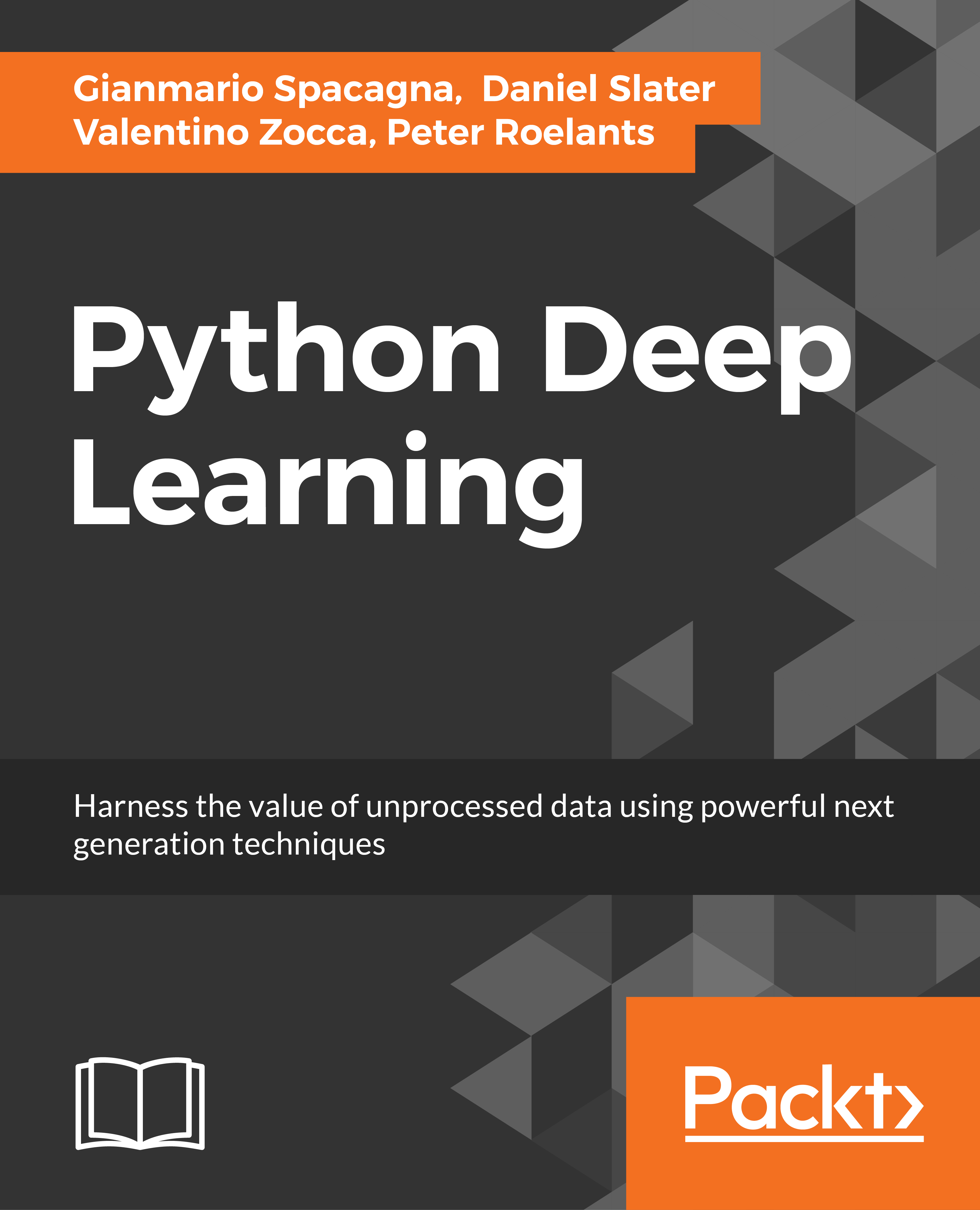-
Book Overview & Buying

-
Table Of Contents

Python Deep Learning
By :

Python Deep Learning
By:
Overview of this book
 Free Chapter
Free Chapter
 Sign In
Start Free Trial
Sign In
Start Free Trial


 Free Chapter
Free Chapter
One of the reasons why deep neural networks can succeed where other traditional machine learning techniques struggle is the capability of learning the right representations of entities in the data (features) without needing (much) human and domain knowledge.
Theoretically, neural networks are able to consume raw data directly as it is and map the input layers to the desired output via the hidden intermediate representations. Traditional machine learning techniques focus mainly on the final mapping and assume the task of "feature engineering" to have already been done.
Feature engineering is the process that uses the available domain knowledge to create smart representations of the data, so that it can be processed by the machine learning algorithm.
Andrew Yan-Tak Ng is a professor at Stanford University and one of the most renowned researchers in the field of machine learning and artificial intelligence. In his publications and talks...
